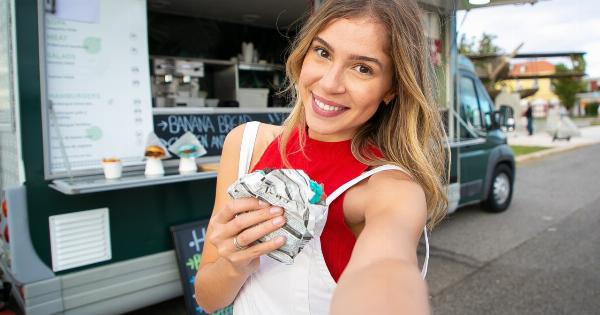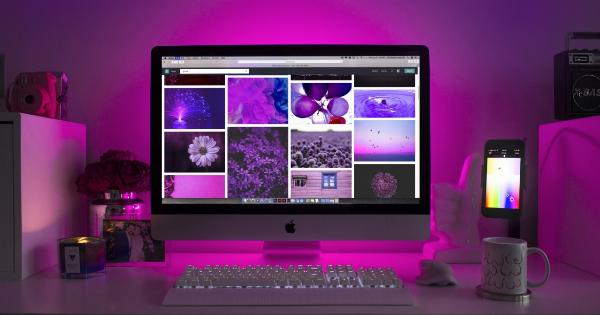When it comes to the products we consume, two factors play a significant role in our decision-making process: taste and packaging. As consumers, we are drawn to products that not only taste great but also have visually appealing packaging.
In this article, we will explore the reasons why we crave both taste and eye-catching packaging and how businesses can leverage this consumer preference to their advantage.
The importance of taste
Taste is the primary factor that drives our desire to consume certain products.
Whether it’s the satisfying flavor of a delicious chocolate bar or the refreshing taste of a fruit juice, our taste buds play a crucial role in determining our preferences. Taste is a sensory experience that can evoke emotions and create lasting memories.
When a product delivers on taste, it creates a positive association in our minds. We remember the delightful experience and are more likely to repurchase the same product in the future.
Businesses understand the importance of delivering on taste and invest in research and development to create unique flavor profiles that stand out in a saturated market.
The power of packaging
While taste is paramount, packaging plays a vital role in capturing our attention and influencing our purchasing decisions. Eye-catching packaging can make a product stand out on crowded store shelves and pique our curiosity.
It acts as the first point of contact between the consumer and the product, making it a critical factor in the overall product experience.
When we come across a visually appealing package, it triggers our desire to explore the product further. Humans are visual beings, and we are naturally attracted to aesthetically pleasing designs, colors, and shapes.
Packaging serves as an opportunity for businesses to create a strong first impression and differentiate themselves from competitors.
The psychology of packaging
There is a science behind the psychology of packaging. Certain elements in packaging design can elicit specific emotions and influence our perception of a product.
For example, warm colors like red and orange can evoke feelings of excitement and energy, while cool colors like blue and green can promote a sense of calmness and relaxation.
The shape and texture of a package can also impact our perception of a product. A sleek and modern design may convey a sense of sophistication, while a rustic and textured packaging may create a perception of authenticity and craftsmanship.
By leveraging these psychological cues, businesses can create packaging that aligns with their brand values and resonates with their target audience.
Building brand identity through packaging
In addition to capturing attention and influencing purchasing decisions, packaging also plays a crucial role in building brand identity. The way a product is packaged can reflect the values, personality, and story of a brand.
It communicates to consumers what the brand stands for and what they can expect from the product.
Take, for example, luxury brands. They often invest in high-end packaging materials and intricate designs to reinforce the perception of exclusivity and quality.
On the other hand, eco-friendly brands may opt for minimalistic and sustainable packaging to align with their environmental values.
By strategically designing packaging that embodies their brand identity, businesses can create a strong connection with their target audience.
Packaging becomes a visual representation of the brand and influences consumers’ perception of the overall product experience.
Creating a memorable unboxing experience
In the era of e-commerce, packaging has taken on a new level of importance. With online shopping becoming increasingly popular, the unboxing experience has become a unique opportunity for businesses to create a memorable moment for their customers.
The act of unwrapping a package can trigger a sense of excitement and anticipation. Businesses can capitalize on this by designing packaging that enhances the unboxing experience.
This may include creative inserts, personalized notes, or even interactive elements that engage the customer.
When consumers have a positive unboxing experience, it creates a sense of delight and fosters brand loyalty. They are more likely to share their experience on social media, generating valuable word-of-mouth marketing for the brand.
The environmental impact of packaging choices
While eye-catching packaging can be visually appealing, it is essential to consider the environmental impact of packaging choices.
As consumers become more conscious of sustainability, businesses need to find a balance between attractive designs and eco-friendly materials.
Investing in packaging solutions that are recyclable, biodegradable, or made from renewable resources can help reduce the environmental footprint of products.
Sustainable packaging not only appeals to eco-conscious consumers but also aligns with the values of the brand.
Strategies for success
To leverage the power of both taste and eye-catching packaging, businesses can employ several strategies:.
- Market research: Understanding consumer preferences and trends can help businesses tailor their product offerings and packaging designs accordingly. Conducting market research, surveys, and focus groups can provide valuable insights.
- Collaboration: Collaboration between product developers and packaging designers can ensure that taste and packaging work harmoniously to create a compelling product experience.
- Investment in design: Allocating resources to develop visually appealing packaging can make a significant difference in how the product is perceived by consumers. Working with professional designers can help businesses create packaging that stands out.
- Consistency: Consistent branding across different product lines can help create a strong brand identity and recognition among consumers.
- Storytelling: Using packaging as a storytelling tool can enhance the emotional connection consumers have with the product and the brand. Incorporating elements that communicate the brand’s values and history can make the product more relatable.
- Unboxing experience: Paying attention to the unboxing experience can create a lasting impression on consumers. Adding unique touches, such as personalized notes or free samples, can make the experience more memorable.
- Environmental responsibility: Choosing sustainable packaging materials and implementing eco-friendly practices can appeal to consumers who prioritize environmental consciousness.
- Customer feedback: Listening to customer feedback and incorporating their suggestions can help businesses refine their products and packaging to better meet consumer expectations.
- Continuous improvement: Regularly evaluating and updating packaging designs can help businesses stay relevant and adapt to changing consumer preferences.
- Marketing and promotion: Effectively marketing the combination of taste and eye-catching packaging through various channels, including digital and print media, can help generate awareness and increase sales.
Conclusion
As consumers, we are naturally drawn to products that offer both great taste and eye-catching packaging. Taste satisfies our senses and creates a memorable experience, while packaging captures our attention and influences our purchasing decisions.
By understanding the psychology behind packaging, businesses can create designs that evoke specific emotions and align with their brand values.
The packaging serves as an opportunity to build brand identity and create a memorable unboxing experience. However, it is essential to balance attractive designs with sustainable and eco-friendly packaging choices to reduce the environmental impact.
By employing strategies such as market research, collaboration, investment in design, and continuous improvement, businesses can leverage the power of both taste and eye-catching packaging to create a compelling product experience that resonates with consumers.































